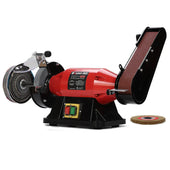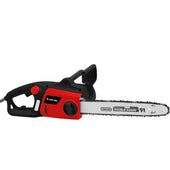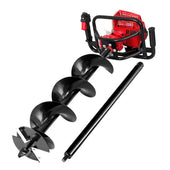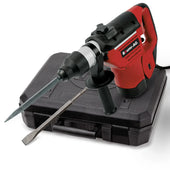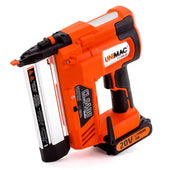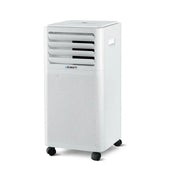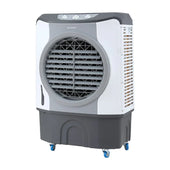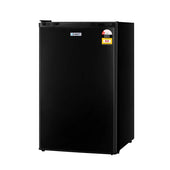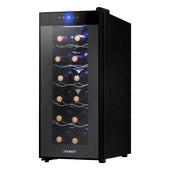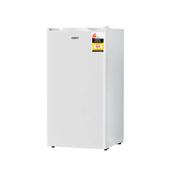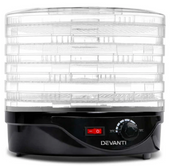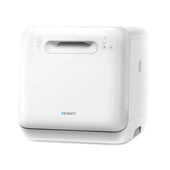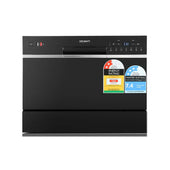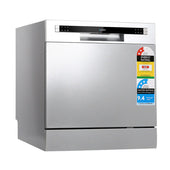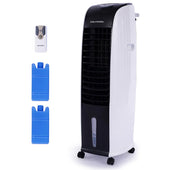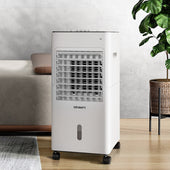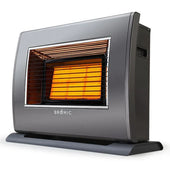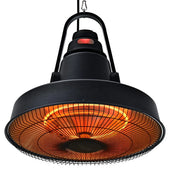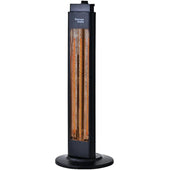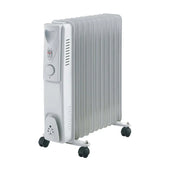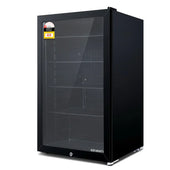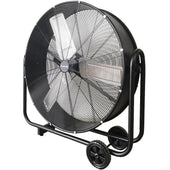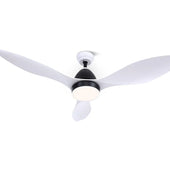Introduction to Desktop Systems: All-in-One vs Traditional
Desktop computers are a staple of productivity, entertainment, and creative workflows. They are available in two primary forms: all-in-one systems and traditional desktops. All-in-one desktops combine the monitor and internal components into a single unit, offering a sleek design and space-saving benefits. In contrast, traditional desktops feature a separate monitor and tower, providing greater flexibility for upgrades and customisation.
Choosing between them depends on specific needs, such as performance, portability, and aesthetic preferences. While all-in-one systems focus on convenience, During Days, traditional desktops cater to those requiring superior customisability and raw power. Understanding their distinct advantages helps buyers make informed decisions.
Design and Aesthetic Appeal: Slim vs Modular
All-in-one desktops feature slim, streamlined designs that integrate the monitor and components into a single unit. This compact structure enhances workspace organisation and complements modern interiors. Their minimal cables contribute to a cleaner, clutter-free setup.
Traditional desktops employ a modular design, separating the monitor, tower, and peripherals. While bulkier, this layout allows greater customisation and upgrade flexibility. It can align with diverse aesthetic preferences, such as gaming enthusiasts who favour illuminated cases and bold designs.
The choice between these desktops often hinges on individual priorities for style, space, and functionality. Both cater to specific user preferences, with contrasting approaches to form and appeal.
Performance Comparison: Processing Power and Upgradability
All-in-one desktops typically bundle components to optimise space, leading to less powerful processors and limited customisation options. This compact design often results in soldered CPUs or GPUs, which are not easily replaced or upgraded. Conversely, traditional desktops are designed with modularity in mind.
- Processing Power: Traditional desktops frequently offer broader processor options, from entry-level to high-performance, outpacing all-in-ones in multitasking and demanding applications.
- Upgradability: Traditional desktops support flexible upgrades, including enhanced graphics cards, additional RAM, or newer processors.
All-in-ones provide simplicity but are often constrained by fixed hardware configurations. Traditional desktops cater to users seeking scalability and long-term adaptability.
Screen Quality and Display Options: Built-in vs External Monitor
All-in-one desktops feature a built-in display, often designed with high-resolution screens and advanced technologies like IPS panels or touch functionality. These provide consistent colour reproduction and viewing angles, making them ideal for creative professionals or users seeking a space-efficient setup. However, their display size is fixed, limiting flexibility for multitasking or larger viewing requirements.
Traditional desktops rely on external monitors, offering users complete control over resolution, size, and panel type. This allows customisation, from budget-friendly options to ultra-wide or 4K monitors for immersive experiences. External displays facilitate multi-monitor setups, enhancing productivity. Comparatively, an all-in-one system's fixed display can feel limiting for users prioritising adaptability or upgradeability.
Ease of Setup and Portability: Plug-and-Play vs Custom Assembly
All-in-one desktops are designed with a plug-and-play approach, requiring minimal effort for initial setup. Users typically need only to connect a power cable and peripherals, such as a keyboard or mouse, making them an ideal choice for those seeking convenience. Their compact design also results in significant portability, enabling easy relocation within homes or offices.
Traditional desktop computers, however, often demand a more complex assembly process. Components such as the CPU, GPU, and storage devices may need to be manually installed or connected, which can be challenging for less tech-savvy individuals. While these systems are highly customisable, their bulkier size makes transport more cumbersome compared to all-in-ones.
Hardware Flexibility: Expandability in Traditional Desktops
Traditional desktops excel in hardware flexibility, offering users extensive expandability. Their large, modular cases often feature multiple slots and bays, allowing users to upgrade components easily. Common upgrades include additional RAM, higher-capacity storage drives, or more powerful GPUs. Motherboards in traditional desktops typically come with free PCIe slots for expansion cards such as wireless adapters or sound cards.
Cooling solutions are also customisable, with room for additional fans or liquid cooling systems. Importantly, users can replace individual components instead of the entire unit if something malfunctions. This modularity makes traditional desktops suitable for gamers, professionals, and enthusiasts who demand custom configurations.
Price Analysis: Initial Cost vs Long-Term Value
The initial cost of all-in-one desktops is typically higher compared to traditional desktops, primarily due to their integrated design and premium components. Traditional desktops often appeal to budget-conscious users with lower starting prices and customisation options, allowing users to select components based on their needs and budget constraints.
When assessing long-term value, all-in-one systems offer compactness and convenience, reducing costs related to additional peripherals or upgrades. However, traditional desktops have the advantage of easier component replacement and upgrades, potentially extending their lifespan and ensuring compatibility with future hardware developments.
Factors such as energy efficiency, repair costs, and resale value further contribute to determining the long-term value of each system.
Gaming Experiences: Which Desktop Handles Gaming Better?
All-in-one PCs often face limitations in gaming due to compact designs, which constrain hardware performance and upgrade options. Most models rely on integrated GPUs or mid-range discrete graphics cards, insufficient for high-end gaming. Traditional desktops, however, dominate the gaming landscape with their customisable configurations. Users can select powerful GPUs, high-speed processors, and ample RAM to handle demanding games seamlessly.
Cooling systems are another critical difference. All-in-one systems frequently struggle with thermal management during intense gaming sessions, impacting performance. Conversely, traditional desktops offer superior cooling solutions, reducing thermal throttling. This advantage ensures the system sustains optimal performance for extended play.
Use Cases: Which Option Suits Different User Profiles?
1. Home Users: All-in-one desktops are ideal for individuals prioritising sleek designs and space efficiency. They offer simplicity, catering to families or casual users needing a device for browsing, streaming, or light productivity tasks. Traditional desktops may suit tech-savvy home users requiring upgradeability for gaming or specific utilities.
2. Professionals: Creative professionals benefit from all-in-ones featuring high-resolution displays and touch functionality. Conversely, traditional desktops suit professionals who require powerful, customisable hardware for tasks like programming or 3D rendering.
3. Businesses: Small offices often prefer all-in-ones for their compactness and reduced cable clutter. Traditional desktops work better in corporate environments where scalability and long-term performance upgrades are paramount.
4. Gamers: Gamers typically lean towards traditional desktops due to their superior graphics capabilities, adaptability to new hardware, and cooling efficiency.
Environmental and Energy Considerations: Efficiency Matters
Energy efficiency and environmental impact represent critical factors when comparing all-in-one (AIO) and traditional desktops. AIO systems often consume less power due to their integrated design, which combines components like CPU, GPU, and display into a single unit. This consolidation reduces energy consumption during operation. Traditional desktops, featuring standalone components, may require higher power loads, particularly when paired with high-performance hardware and external monitors.
From a lifecycle perspective, AIOs typically generate less electronic waste owing to fewer physical components. However, the difficulty of upgrading AIOs may lead to earlier replacement compared to traditional desktops, which allow for ongoing hardware updates. This trade-off deserves consideration.
Warranty and Support: Comparing Manufacturer Commitments
When evaluating warranty and support, manufacturers often offer differing commitments between all-in-one and traditional desktops.
- All-in-One Desktops: Typically, manufacturers bundle extended warranties and technical support services for these integrated systems due to their unique hardware design. Replacement policies may involve full unit swaps rather than individual component repairs, ensuring faster resolution.
- Traditional Desktops: These systems generally come with standard warranties focused on individual components such as processors, GPUs, or monitors. Upgrading or replacing specific parts is usually simpler but may have less extensive support coverage.
All-in-one desktops may provide streamlined support, whereas traditional desktops offer flexibility, catering to varied user needs.
Technology Trends: Future-Proofing Your Desktop Investment
The rapid pace of technological development requires consumers to assess how desktop choices measure up to emerging trends. Traditional desktops typically offer greater flexibility in upgrading individual components, such as processors, GPUs, or storage, enabling easier adaptation to advancements. Conversely, all-in-one desktops often integrate hardware tightly within the design, which limits upgrade options but boasts sleek aesthetics.
When evaluating future-proofing potential, modularity plays a critical role. Custom-built traditional desktops can cater to long-term needs by incorporating state-of-the-art components. However, all-in-one models increasingly adopt cutting-edge features such as touchscreens and ultra-high resolution displays.
Both options benefit from durable designs but differ significantly in upgradability and adaptability to evolving standards.
Final Verdict: Which Desktop Offers the Best Overall Value?
Determining the desktop that offers the best overall value depends on specific user needs and preferences. All-in-one desktops provide an integrated solution, blending modern aesthetics with reduced clutter. They are ideal for users prioritising convenience, compactness, and streamlined functionality. However, traditional desktops appeal to those seeking customisation opportunities, better performance for intensive tasks, and long-term flexibility when upgrading components.
Factors like initial cost, upgrade potential, repair ease, and space availability weigh heavily in the decision. Buyers should analyse their personal requirements, whether they value sleek design and simplicity or prioritise hardware customisation and processing power for demanding applications.



